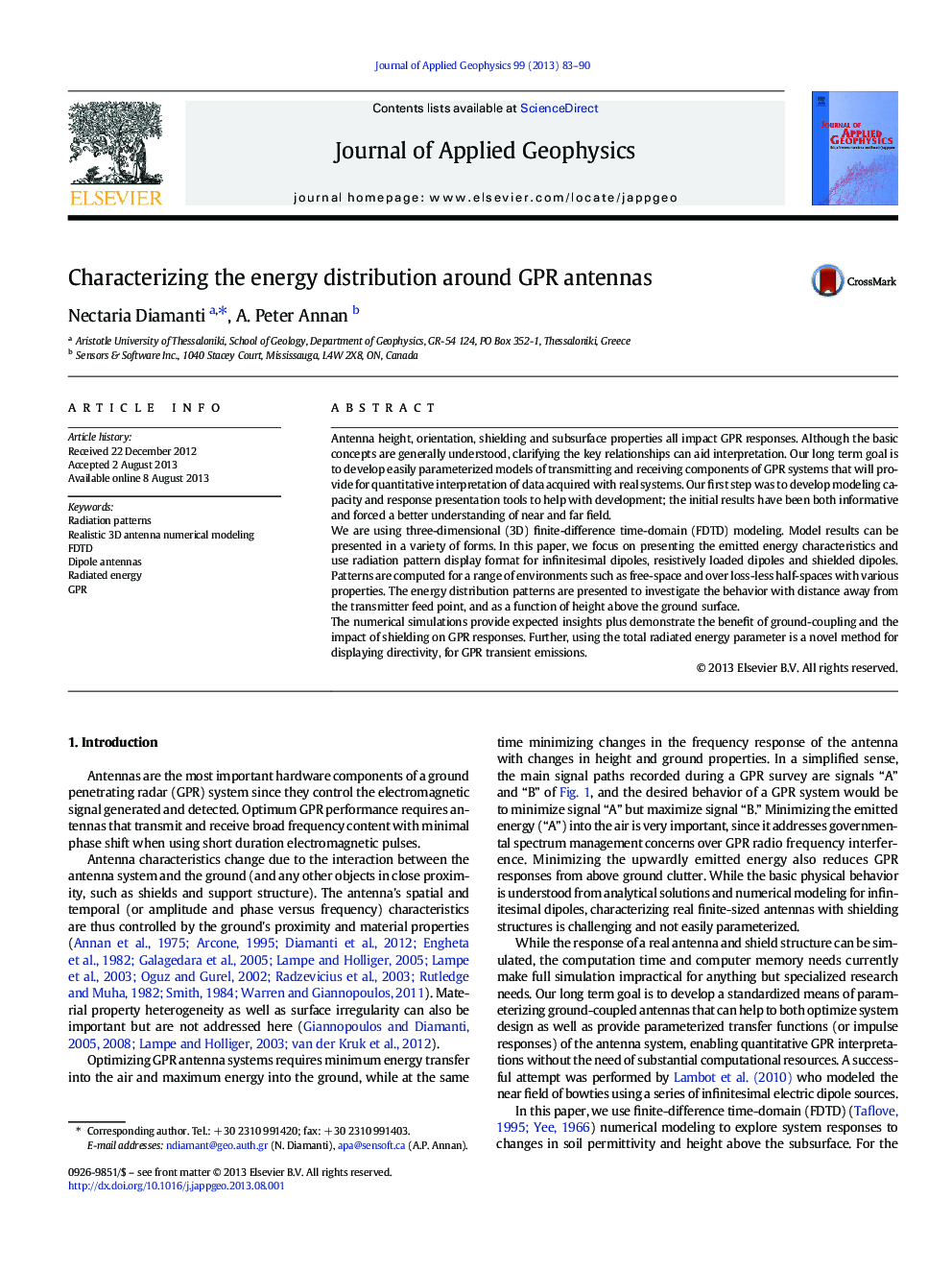| Article ID | Journal | Published Year | Pages | File Type |
|---|---|---|---|---|
| 4740245 | Journal of Applied Geophysics | 2013 | 8 Pages |
•We developed a novel, systematic way for displaying UWB antenna radiation patterns.•Transition to far-field behavior is at much larger distance than previously thought.•Shields are not needed to get energy into ground but decrease energy emitted in air.•Shielding & Rx also contribute to transmitted signals.•A minimum antenna height is highly beneficial for energy going into the subsurface.
Antenna height, orientation, shielding and subsurface properties all impact GPR responses. Although the basic concepts are generally understood, clarifying the key relationships can aid interpretation. Our long term goal is to develop easily parameterized models of transmitting and receiving components of GPR systems that will provide for quantitative interpretation of data acquired with real systems. Our first step was to develop modeling capacity and response presentation tools to help with development; the initial results have been both informative and forced a better understanding of near and far field.We are using three-dimensional (3D) finite-difference time-domain (FDTD) modeling. Model results can be presented in a variety of forms. In this paper, we focus on presenting the emitted energy characteristics and use radiation pattern display format for infinitesimal dipoles, resistively loaded dipoles and shielded dipoles. Patterns are computed for a range of environments such as free-space and over loss-less half-spaces with various properties. The energy distribution patterns are presented to investigate the behavior with distance away from the transmitter feed point, and as a function of height above the ground surface.The numerical simulations provide expected insights plus demonstrate the benefit of ground-coupling and the impact of shielding on GPR responses. Further, using the total radiated energy parameter is a novel method for displaying directivity, for GPR transient emissions.
